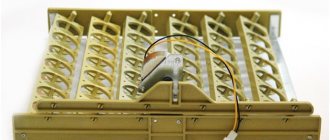What is the difference from medical duck?
Vessels and ducks are medical equipment for treating the natural needs of bedridden patients. With the help of this equipment, patients can defecate without getting out of bed.
Important!
What is the difference between a ship and a duck? Because it is intended only for emptying the bladder. A vessel is used for defecation.
Duck
- this is a reservoir with a volume of one and a half liters with (in most cases) a wide neck. This is a urine bag made of plastic, glass or cellulose (if the product is disposable). This name comes from the shape, which resembles a bird.
Vessel
- the item is more universal and is intended for both defecation and minor needs. This is a container in the form of an anatomically shaped tray with low sides.
What types of ships are there?
There are several types of medical students, which differ in:
- Form (the gender of the patient must be taken into account).
- Material.
- Price.
Requirements
Emptying trays are manufactured according to the anatomy of the human body.
They should be:
- Ergonomic and comfortable.
- Do not injure the patient.
- Resistant to chemical treatment.
- Be easy to wash.
- Correspond to the patient's weight.
Form
The most popular shape is scaphoid in various modifications.
This form is the most comfortable for both the patient and the staff.
Use does not stain clothes and bedding. The most comfortable models are those with low sides. This makes it easier to feed the vessel and empty the patient.
Important!
A significant drawback is the small capacity. Therefore, if a patient needs to give an enema, such a container will not be suitable. In other cases, a flat scaphoid container is an ideal option for immobile patients.
Round boats are not as comfortable:
- Firstly, when using them, there is a high probability that its contents will spill out.
- Secondly, a round vessel creates inconvenience for the patient, since its walls are quite high, and not every patient can cope with emptying.
Such a reservoir is best used for patients with partial mobility, as well as during enemas.
Materials
The most popular materials for ships:
- Plastic.
- Stainless or enameled steel.
- Rubber.
- Pulp (disposable products).
Advantages and disadvantages of various types of vessels:
- The rubber inflatable reservoir
is soft and warm, easily adapts to the shape of the body, ideal for completely immobile patients, for patients with incontinence. The vessel does not put pressure on the sacrum and makes it possible to adjust the height of the sides. The main disadvantage is fragility. Also, the rubber container sometimes deflates under the pressure of the patient's weight. - Metal container.
The main advantage is long service life. The product is easy to care for, the material is resistant to regular disinfection. Disadvantages: the material is cold (requires heating before serving), not suitable for people with bedsores, rusts over time. - Plastic containers.
They come in a variety of shapes and sizes. Main advantages: lightness, low cost, convenience. The vessel heats up easily, adapting to body temperature. The material is inert to chemicals. Disadvantages include absorption of odors. After prolonged use, odors remain even after treatment with detergents and disinfection.
For patients who often undergo enema, it is better to choose a deep metal container.
How to use semolina correctly in the hospital and at home?
Rubber products
This tank is inflated with air, it is soft and light. Perfect for home use and easy to care for.
When using a rubber tray, the patient is provided with maximum comfort.
The container is flat, round, with soft edges, a round hole and a lid.
How to use:
- When used, the tray is carefully placed under the patient, while the pelvis is raised up, the legs are spread apart and slightly bent at the knees.
- The reservoir is placed so that the patient's buttocks are strictly above the hole.
- The vessel is moved so that the rounded part is directed towards the patient.
- If a patient has diarrhea or urinary incontinence, a rubber bedpan is exactly what is needed. Due to the soft material, the patient can stay on the boat for a long time without developing bedsores or injuring the sacrum. This product is also used instead of a backing circle.
Important!
A rubber bed is the most suitable option for patients suffering from bedsores, injuries to the sacrum or buttocks.
Watch a video that explains how to choose a bedpan for a bedridden patient:
Metal
When using a metal container, the patient is turned on his side, a bedpan is placed, and then returned to his back. The tray is installed so that in a supine position the patient’s buttocks are located in the middle of the hole .
After defecation, the patient is washed, the perineum is treated with baby cream or powder, and, if necessary, treated with a weak solution of potassium permanganate. After this, the vessel is freed from secretions, washed with a brush, and disinfected.
Reference!
The metal tray must be heated before serving. To do this, pour warm water into it and leave for several minutes. This will provide the patient with comfort and allow him to relax.
Metal is a rather hard material and can cause bedsores in the patient.
If possible, it is better to cover the container with disposable covers. They will provide comfort, make the vessel warmer, and protect against infection.
Plastic
A plastic boat is the most popular and least expensive option.
It is quite convenient, but there are cases when it is not recommended to use it:
- If the patient suffers from constipation, diarrhea or urinary or fecal incontinence.
- If the patient has bedsores in the sacral area.
- The patient needed an enema. Due to the low sides, contents may spill.
In all other cases, a plastic product is not only appropriate, but also convenient.
Reference!
Typically, one side of a plastic vessel is narrow and slightly pointed, and the other is rounded. It is on this side that the hole is located.
When feeding, the container is carefully slipped with its narrow end under the patient’s sacrum and placed so that the buttocks of the tweezers are above the hole. The plastic tank is equipped with a handle and a lid. After emptying, it can be easily removed using the handle, closed with a lid and taken out.
Watch the video in which the doctor shows how to give, pick up and not capsize the vessel:
Disposable
Made from waterproof cellulose material (thick paper), it is designed for one use only and can be disposed of immediately after use.
Material for disposable vessels - 100% recycled newsprint. They are inexpensive and convenient, and their use reduces the risk of infections. Such products can retain moisture for 4 hours. Suitable for both men and women.
Important!
If the patient suffers from incontinence, then it is better not to use a disposable product.
Caring for a nephrostomy at home
Nephrostomy, being a foreign object for the human body, requires constant care in order to prevent infection. The skin around the tube insertion site should always remain dry, clean and free of inflammation. There should be no pus coming out of the hole - and if this happens, you should immediately call a doctor. Nephrostomy care includes:
| washing with saline solution and antiseptics (for example, drugs such as chlorhexidine or furatsilin), | |
| applying a sterile bandage to the site where the operation was performed - and for the first 2 weeks it is changed daily - this is done by medical staff or relatives, | |
| after the wound has healed, the bandage should be changed if necessary - when it gets wet or dirty, | |
| timely and regular emptying of the urine bag, | |
| Every 2 weeks, the doctor should examine the area where the nephrostomy is installed. |
Patients are also prohibited from physical exercise and heavy lifting, i.e. this can lead to injury, kinking of the drainage tube, which, in turn, will cause serious complications. The catheter should always be placed in exactly one position.
Duck
Duck is a urine bag. It is lightweight, comfortable, and can be used in any body position. The main advantage is a minimum of anxiety for the patient.
The weft is so comfortable that patients with partial mobility can use it independently. It has a convenient compact shape, equipped with a handle and a lid. Material – plastic, glass, stainless steel.
Reference!
Ducks come in various modifications and are suitable for men and women.
Male and female versions differ in design in accordance with the structure of the reproductive system:
- Containers for men have a round neck for the penis.
- The women's version is equipped with a wider neck shaped like a willow leaf. Such a container is placed close to the vagina, and the patient can empty the bladder without any problems.
- There are also universal products, in which case the kit includes a special attachment for men.
You can make a duck yourself. How to do this is shown in the video:
Care
If the product is not disposable, it must be disinfected. To do this, you can use a chloramine solution of 1%, a solution of Lysol 5%, a weak solution of hydrochloric acid to neutralize the odor.
- For washing, be sure to use brushes or washcloths.
- Emptying trays are stored separately in cabinets with closed doors.
- To get rid of an unpleasant odor, use a solution of potassium permanganate.
- After washing and processing, the container should be wiped dry.
Important!
The vessel should be thoroughly washed, disinfected and dried each time after use!
A properly selected vessel or duck will allow the patient to defecate in comfortable conditions.
When selecting them, you need to pay attention to the design of the product, material, service life, and the severity of the patient’s condition.
But the most important thing is the wishes of the patient. After all, he should relax and calmly relieve himself.
At the same time, he should not experience discomfort, embarrassment or cause inconvenience to neighbors.
A seriously ill patient performs all physiological functions without leaving his bed, so he needs to be helped in such a way as not to cause unnecessary concern and not to pollute the bed.
One of the necessary items for patient care is a bedpan, which can have a different shape and design. It is made of earthenware, enamel-coated metal, plastic or rubber. Rubber vessels are inflated with air through a special hole in a metal frame, which is treated with alcohol; These vessels are most convenient at home. Most often, the vessel is flat, round in shape, with a large round hole on top, closed by a lid, and a small hole in the tube extending from the side surface and serving to release the contents. A clean vessel should fit under the bed on the bench.
Application of duck
When serving duck to a seriously ill patient, there is absolutely no need to turn him on his back. The person can be placed on their side because the duck is made in such a way that it can be used comfortably in different body positions of the patient. However, this medical item only functions as a urinal. Ducks are available for both men and women. The difference in designs is due to the structural features of the female and male urinary systems. Ducks for men are equipped with a round neck where the penis is placed. In the female version of the duck, the neck, which has a “willow leaf” cross-sectional shape, is attached to the crotch. Universal products are also available for sale. In this case, a special funnel is included with the male duck, which makes it possible for women to use the duck as well.
The question of how to properly place a duck under a bedridden patient does not arise. This product can be held in your hands while urinating. The patient can even use the duck himself.
Helpful information. For the convenience of a bedridden patient and his caregiver, it is optimal to have both a duck and a vessel in the arsenal. Since, if it is necessary to empty only the bladder, there will be no need to disturb the patient once again in order to place a bedpan under him.
Providing a vessel to a seriously ill patient, disinfecting the vessel
While using the bedpan, the patient must be separated from other patients with a screen. The vessel is first warmed by rinsing with warm water, some of which is left so that the feces do not stick to the walls of the vessel.
The bed is covered with oilcloth where the vessel will be placed. When placing a bedpan, the hand is placed under the patient’s sacrum, the pelvis is raised upward, and a bedpan is placed between the legs spread to the side and the knees bent.
The vessel is placed under the buttocks so that the perineum is above the large hole, and the tube is between the thighs towards the knees. The vessel is removed in the reverse order.
The patient is washed, the perineum is wiped with a gauze napkin and lubricated with boric petroleum jelly or. baby cream The used vessel is emptied of its contents, thoroughly washed with a brush, disinfected with a 3% solution of chloramine or bleach and rinsed.
A seriously ill patient, if necessary, uses a bedpan to empty his bowels, and uses a urinal when urinating. The vessel can be made of metal with an enamel coating, plastic or rubber. A rubber bed is used for extremely weakened patients, as well as in the presence of bedsores. A foot pump is used to inflate the rubber vessel. Do not inflate the vessel too tightly, otherwise it will put significant pressure on the sacrum.
If the patient has a urge to defecate, it is necessary:
- put on gloves;
- prepare the vessel: warm, dry, pour a little water on the bottom;
- ask the patient to bend his knees and raise his pelvis (if the patient is weakened, help him raise his buttocks);
- place oilcloth under the buttocks;
- put the ship on oilcloth;
- help the patient lower onto the bedpan so that his perineum is above the opening of the bedpan;
- ask the patient to bend his knees and raise his pelvis;
- wipe the anus with a damp sanitary napkin. It is less traumatic than using toilet paper;
- wash the vessel thoroughly;
- pour hot water over the vessel and place it under the patient;
- dry with a clean cloth;
- remove the vessel, oilcloth;
- help the patient lie down comfortably.
If the patient is in serious condition, weakened, then it is better to use a rubber bed:
- put on gloves;
- prepare a vessel (dry, warm), pour a little water on the bottom;
- help the patient bend his knees and turn to his side, with his back to you;
- With your right hand, bring the vessel under the patient’s buttocks, and with your left hand, holding the patient by the side, help him turn onto his back, while pressing the vessel tightly against the patient’s buttocks;
- position the patient so that the perineum is above the opening of the vessel;
- place an additional pillow under the back so that the patient can be in a “half-sitting” position;
- give time for the act of defecation;
- turn the patient on his side at the end of the bowel movement, holding him with his left hand, the bedpan with his right hand;
- remove the bedpan from under the patient;
- wipe the anus with a damp sanitary napkin;
- wash the vessel, pour hot water over it;
- place a bedpan under the patient;
- wash the patient from top to bottom, from the genitals to the anus;
- dry with a clean cloth;
- remove the vessel, oilcloth;
- remove gloves;
- help the patient lie down comfortably.
After the vessel is washed, it must be rinsed with hot water and placed near the patient's bed.
After using the urine bag, the contents are poured out and the container is rinsed with warm water. To remove the strong ammonia odor of urine, you can rinse the urine bag with a weak solution of potassium permagnate or a “Sanitary” cleaning agent. Various events lead to a serious condition of a person in a hospital bed, and the most difficult thing in this situation is to ensure cleanliness and comfort when performing natural needs.
Care for seriously ill patients is carried out in accordance with the localization of the problem, trying not to aggravate the pain - this applies to the choice of positions for sleeping, resting, eating and using the toilet.
Vessel feeding technique
The procedure for emptying the bowel or bladder should not cause a negative reaction in the patient. It must be carried out very tactfully and, if possible, confidentially, allowing the person to calmly relieve himself. Below is an algorithm for how to place a bedpan under a bedridden patient.
To perform the manipulation, you will need a screen, rubber gloves, a vessel, oilcloth, toilet paper, clean dry rags or cotton wool, soap, and a container of hot water.
Before correctly placing a bedpan on a bedridden patient, protect the person (if possible) from prying eyes with a screen. Warm up the equipment (especially metal ones) well in warm water and wipe it dry. Carry out all procedures for loading the vessel with gloves.
- Remove the blanket from the patient.
- If a bedridden patient can move independently, ask him to bend his legs and raise his pelvis to place an oilcloth to protect the bed linen from contamination. If a person is completely unable to move, you need to do it yourself.
- Take the vessel so that the rounded part is directed towards the patient. Place one hand under the sacrum to help the person sit up, and with the other hand, place a waste container under the patient's pelvis.
- After installation, make sure the patient is comfortable. Before supplying the equipment, completely immobilized patients can be turned first on their side, and then, after installing the bedpan, returned to their back. The tray is installed in such a way that when returning to the back, the patient’s buttocks are located in the middle of the special hole.
- Cover the person with a sheet or blanket and leave for a few minutes.
- After completing the act of defecation or urination, wash the patient. First, the remains of feces and urine are removed with toilet paper, then with damp cotton wool. Treatment must be carried out in the direction from the genitals to the anus to avoid infection.
- Wipe the perineum dry, ask the patient to raise the pelvis, or help him with this and at the same time pull out the bedpan with the oilcloth.
After the procedure, it is necessary to free the equipment from secretions and disinfect it for a certain amount of time, depending on the concentration of the active chemical. Then the medical device is washed with running water and dried for further use.
Important! In a hospital setting, provide the patient with individual medical supplies. You can put special disposable covers on the vessel, which will not only protect against infection, but also provide additional comfort (the vessel will become warmer).
Types of medical vessel
In most cases, for bedridden patients who are unable to move independently and do not use crutches or walkers for the disabled, there is a special system for the discharge of natural needs, for which a medical vessel is used.
The special design of the vessel bowl allows the patient to get rid of urine and feces in an acceptable form, without contaminating bed linen and clothing.
Medical vessels are manufactured in a wide range of designs from various materials:
- enameled metal;
- faience;
- rubber;
- plastic.
All vessels are more or less similar in shape - smoothed round shapes, low height, an oval hole in the center, closed with a lid and a side pipe for draining the contents. The choice of the type of vessel should be made depending on the age and weight of the patient. Processing and disinfection of all types is the same. The vessel should be stored on a stool under the patient’s bed.
Vessel feeding technique
Before starting sanitary measures, the patient’s bed is fenced off with a screen, the place under the vessel is lined with waterproof oilcloth, and the vessel is rinsed with warm water. Gently moving your hand under the patient's sacrum, slowly raise the pelvis, while the patient's legs are directed upward and bent at the knees. The narrow part of the vessel is placed under the sacrum until the opening of the vessel aligns with the perineum.
Upon completion of emptying, the vessel is removed from under the patient in a similar way, closed with a lid and placed on a stool. The patient's perineum is cleaned with a damp cloth and treated with baby cream or Vaseline.
The bedpan is emptied by emptying the contents into the toilet, after which it is rinsed with water for final cleaning, disinfected with chloramine, and put away under the bed.
A bedpan is not a whim, but an important and necessary means of caring for a bedridden patient; on the website you will learn how to choose it correctly. The normalization of a patient’s life directly depends on the quality, form and features of this medical item. Using disposable diapers is not always advisable, but it also has a significant impact on the budget. In this case, the way out of a sticky situation is a properly selected vessel.
When choosing a medical device, you need to take into account the gender of the elderly person. For men, a special urinal is used.
Standard vessel sizes:
- 43×35 cm, volume – 0.7 l;
- 48×37 cm, volume – 1.0 l;
- 54×45 cm, volume – 1.5 l.
Modern devices are most often scaphoid and round in shape. Medical vessels must be:
- resistant to aggressive agents and disinfectants;
- non-traumatic;
- convenient for the elderly person and their caregivers.
Various materials are used to make the vessel - rubber, metal, plastic.
Which vessel (duck) is better to choose for an elderly person
When choosing a vessel, you need to take into account all its advantages and disadvantages. The boat-shaped shape is more preferable, since when using such equipment the risk of staining the laundry is minimal.
Round-shaped devices are more likely to leak.
If an elderly person suffers from constipation and has to use enemas for emptying, then it is better to choose large-volume metal products.
Advantages of a plastic vessel:
- the material easily accepts the temperature of the human body;
- light weight of the device;
- shape - the height of the product for the sacral area is lower than for other areas;
- indicated for patients who cannot elevate the sacrum on their own;
- the product is resistant to frequent washing and treatment with any disinfectants;
- does not retain or accumulate unpleasant odors;
- the presence of a measuring scale, which allows you to control the volume of bowel movements;
- the color range of products allows you to study the color of feces or urine;
- there is a cover.
The disadvantages of plastic products include the small volume of the vessel, which does not allow its use after an enema.
The metal product is more durable and is more often used in medical institutions. It should not be constantly under the patient.
Advantages of stainless steel products:
- unlimited service life;
- hygiene – the smooth surface does not retain feces particles;
- resistance to septic tanks and frequent washing;
- large bowl volume;
- shape, many models are equipped with side handles.
Metal models should not be used for patients with bedsores, as the sharp sides can injure the skin. In addition, it is difficult to see the color of feces or urine.
Operating rules
Before using a medical product, you need to prepare a towel or oilcloth, talc or baby powder, toilet paper or wet wipes, and rubber gloves.
Algorithm of actions when using the vessel:
- Wash your hands, put on gloves.
- Place a towel or waterproof napkin under the elderly person's basin.
- Pour hot water into the vessel. This will warm the product.
- Treat the edges with talcum powder or baby powder. This will make it easier to install the vessel under the basin. It is prohibited to use these products for bedsores.
- Ask the bedridden patient to turn over on his side and bend his legs. If independent movement is impossible, then it is turned over.
- Place the bedpan as close to the patient as possible. Next, ask him to lift the pelvis while supporting the patient under the sacrum. Use your other hand to guide the medical equipment under the older person.
- Make sure the boat is positioned correctly and the hole is in the right place.
- If the patient can perform the necessary actions independently, there is no threat to life and health, then it is better to leave him alone with the medical equipment. Ask to report the end of bowel movement or urination.
- Pull out the vessel.
- Remove the medical device and carry out the necessary hygiene procedures.
Rules for leaving with a vessel
In order not to create additional discomfort for a sick person, you need to use a bedpan carefully and quickly, following a few simple rules:
- If possible, ensure the confidentiality of the procedure by using a medical screen;
- before placing a bedpan on a bedridden patient, you must put on medical gloves, prepare an oilcloth (or a special diaper), wet wipes for intimate hygiene, cotton wool, warm water, toilet soap, a towel or soft cloth;
- warm up and wipe the vessel (duck) dry and make sure that the surface temperature is equal to the human body temperature;
- remove the blanket;
- ask the patient to raise his pelvis and bend his knees to place the oilcloth, or, in case of immobility, perform these manipulations independently;
- It is necessary to correctly position the vessel for a bedridden patient by lifting or supporting the sacral part with one hand, and with the other hand, carefully bringing the vessel so that the buttocks are located above the hole;
- make sure that the patient is lying comfortably, cover him with a blanket or sheet and give him time to empty his bowels and bladder;
- at the end of the procedure, after defecation and urination, it is necessary to clean the skin from the remains of feces and urine with toilet paper or wet wipes, then wash the genital area with warm water and soap, carefully wipe dry, then remove the vessel (duck) and oilcloth.
In some cases, it is not possible to empty the intestines while lying on your back, so you will need to turn the patient on his side and protect his skin from contamination with a diaper or napkin. After the procedure, you can lubricate the surface of the skin with cream or treat it with powder.
Important! The vessel (duck) for bedridden patients is washed, disinfected and dried immediately after the manipulation.






